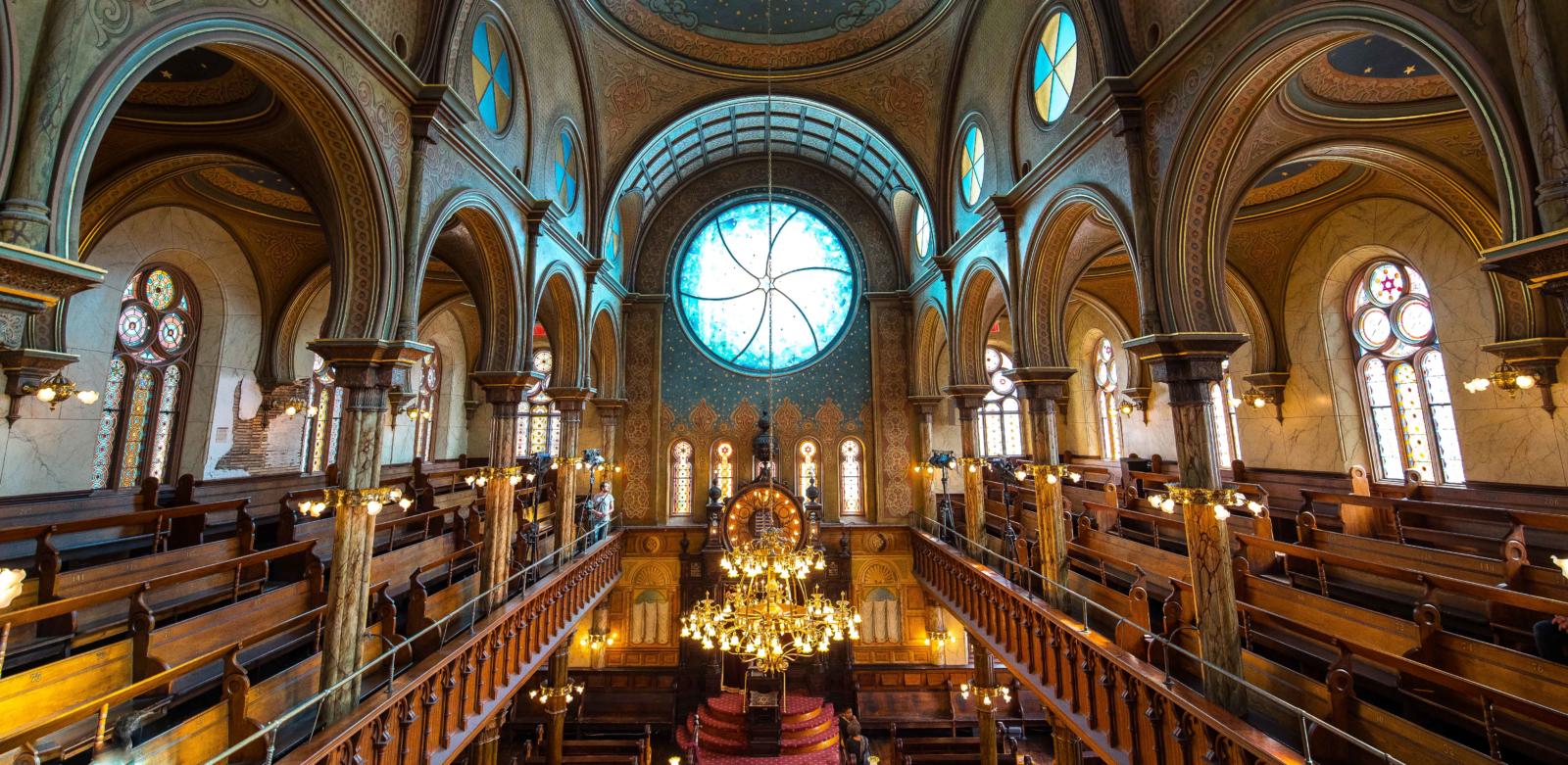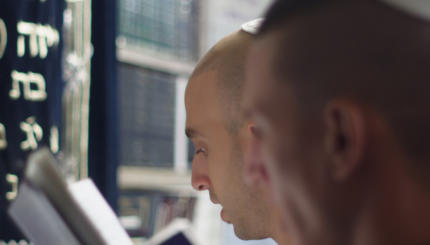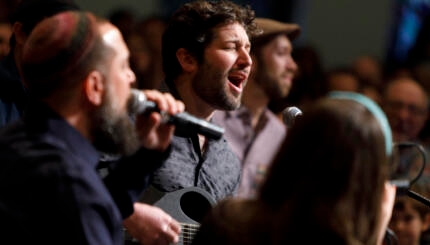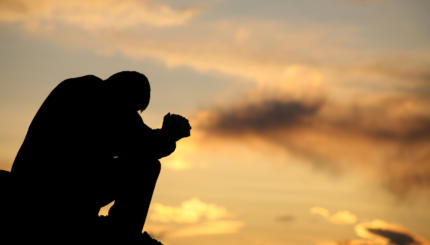When the institution of the synagogue began to emerge, the Temple in Jerusalem was still standing. The first roles of the synagogue were not associated with prayer, but rather with Jewish study and gathering. The first rabbis were not celebrants of religious rites but teachers of religious texts; in fact, the word rabbi means “my teacher.”
Following the destruction of the Temple in 70 CE, the synagogue assumed an additional role as the place of communal prayer. No distinct architectural forms for synagogue buildings became standard, but the interior design came to include features still found today: a lectern for the leader of the service, a “Holy Ark” in which Torah scrolls are kept, and seating arranged facing Jerusalem, in honor of the centrality of the site of the former Temple.
As the liturgy evolved and became formalized, expertise in recitation was needed, since it was done by memory prior to the development of movable type and the wide-scale production of books. The knowledgeable person leading the congregation in prayer was considered its representative—in Hebrew, sh’liach tzibbur. Initially filled by an ordinary lay person with greater knowledge, the role developed over time into a profession, the cantor or hazzan.
The contemporary hazzan no longer needs to memorize the words of the prayer service, but is an expert in the musical rendition of the service. She or he has expertise in the diverse, historic musical traditions of the Jewish people and keeps abreast of new compositions for synagogue use. A cantor may serve as an educator for the community, and will often train children and adults in the musical tradition, either in preparation for becoming Bar or Bat Mitzvah or to participate in a choir during services.

Help us keep Jewish knowledge accessible to millions of people around the world.
Your donation to My Jewish Learning fuels endless journeys of Jewish discovery. With your help, My Jewish Learning can continue to provide nonstop opportunities for learning, connection and growth.
The role of the rabbi has also expanded in modern times. Perhaps under the influence of the religions of the wider Western society, the rabbi is also seen as a clergyperson–not only a teacher, but a pastor, a preacher, a minister and an administrator supervising the myriad activities of the synagogue and meeting the immediate and long-term needs of congregants. In some communities, the rabbi is also expected to represent Jews and Judaism to the non-Jewish community.
Historically, only men became rabbis and cantors, but in the last several decades, women have entered these roles in all streams of Judaism, with the exception of Orthodox Jewish communities in which there are currently very few female rabbis or cantors serving.
In modern times, rabbis achieve the role and title by studying Judaism and Jewish texts for a prescribed period of time, usually after earning an undergraduate degree, and then completing requirements for ordination. These requirements vary among the streams of Judaism, but all the streams have institutions of higher Jewish learning, often called seminaries. Cantors, as a rule, are not ordained, but are invested or authorized by the same seminaries that ordain rabbis, with roughly the same length of training after an undergraduate education. Governments often recognize both rabbis and cantors as clergy for the purpose of marriage.
As the role of the synagogue has expanded, especially in North America, the education of children and adults has become a more pronounced function. A new position, Director of Education, has emerged, with responsibility for formal and informal Jewish educational programs for children and youth. Similarly, the development of large congregations has often required that Executive Directors professionally manage their business affairs. Separate training and certification programs have developed for these professions. (They are not considered “clergy” unless the person fulfilling the function also happens to be a rabbi or cantor.)



